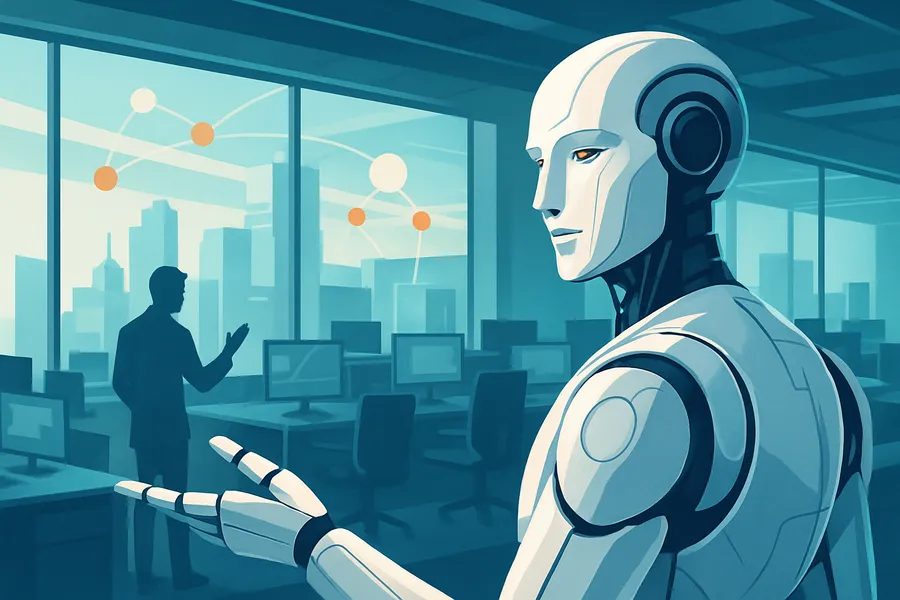The Day an Excel File Cost Us 200 Customers
I remember a few years ago, during the growth phase of a B2C startup where I was part of the founding team, we offered an innovative service for connected cars. We had traction, good reviews, and an upward user curve… until everything fell apart.
An error in loading a file into the payment system —poorly synchronized with the fraud alert system— caused over 800 users to receive duplicate charges on their cards. Many thought they had been victims of fraud. Panic ensued. Support collapsed. And more than 200 customers canceled their subscriptions that same week.
In retrospect, it wasn’t just a technical problem: it was a human bottleneck, a dependency on manual processes, information silos, and an architecture that didn’t consider operational resilience. The most frustrating part was that we already knew where the problem was… but we didn’t have enough hands or intelligent systems to prevent it.
Why AI Agents are the Antidote
Today, I would have solved it in less than a week with an autonomous AI agent, well-connected to our internal systems and trained to understand business rules, read real-time events, and act when something didn’t add up.
A modern agent —based on language models like GPT, but with access to internal data and external functions (RAG + APIs)— would have detected that records weren’t being updated, would have generated alerts, and even initiated preventive communications with users.
But the most interesting part is that no one would have needed to “program it” manually for each scenario. These new agents can reason, make contextualized decisions, and orchestrate flows based on objectives, not scripts.
Insights Few People Tell You
1. Most Bottlenecks Aren’t in the Code… They’re in People
Not because people are inefficient, but because organizational design still operates under the model that everything must go through human validation. Agents allow distributing intelligence in the system, not on desks.
2. You Don’t Need Everything Ready to Start
Many believe that implementing AI requires a perfect architecture, impeccable data, and standardized processes. False. Agents can start with simple rules, monitor incomplete sources, and evolve over time.
3. The Hidden Value is in Intelligent Coordination
The truly powerful aspect isn’t that they respond to tickets or generate text, but that they act as “invisible coordinators” between systems, data, and humans. It’s like having a mini-digital COO 24/7, aligned with your metrics and error tolerances.
What Are Companies Using Agents Doing Today?
Companies that have strategically adopted them:
- Reduce churn before it happens, detecting patterns of dissatisfaction and generating immediate corrective actions.
- Orchestrate interdepartmental flows without the need for human intermediaries.
- Automate routine decisions, freeing up hours of work that were previously wasted on validations or operational coordination.
- Create personalized experiences at scale, where each customer receives contextual follow-up, not just generic responses.
And most importantly: they differentiate themselves not just by what they do, but by how they do it: with an infrastructure that learns, reacts, and scales without friction.
Where to Start?
- Identify points where your teams get saturated or where errors repeat.
- Map out what decisions people make today that could be delegated to an agent.
- Evaluate which systems you need to expose as internal APIs for agents to operate.
- Design a first agent with a clear objective, a reliable information source, and a controlled environment.
Don’t think about replacement, think about expanding your operational bandwidth.
Conclusion
If I learned anything from that startup crisis, it was this: efficiency isn’t just about optimizing what you already do, but about rethinking who does it.
AI agents are revolutionizing businesses not because of their technology per se, but because they allow redesigning workflows, minimizing human error, and focusing team energy on tasks that truly move the business forward.
Today, when I advise organizations at Redstone Labs, the pattern repeats: the bottlenecks are there, hidden between manual decisions and disconnected systems. And increasingly, agents are becoming the invisible solution that makes everything flow.
Want your team to operate without friction, bottlenecks, and focused on what matters?
Schedule a discovery call with Redstone Labs and let’s design your first agent together.
